This week’s Song of The Week is about beatniks, high school nostalgia, and the convoluted paths we take to visit our past. Oh, yeah, and about a terrific if somewhat obscure jazz standard. If that sounds oxymoronic, it’s because the unique charm of jazz lies in the fact that a song can be both obscure and yet a standard. But we’ll get to that.
Ella Fitzgerald, ‘Spring Can Really Hang You Up the Most’
The best part of my youth was spending junior and senior years in Ensemble, a select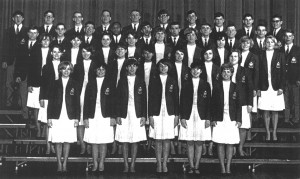 36-voice group, top of the heap of the half-dozen choirs at Woodward HS in Grover’s Corner, Midwest. I’ve been singing ever since, and still attribute my basic good habits to the training from those years, third period, right before lunch, five days a week, not counting summer rehearsals. Heaven only knows how the level of the group was so high at a regular public high school. I remember distinctly being no higher than the middle of the pecking order of the eight basses in terms of vocal abilities (range, quality, reading, memory). Don Howells was the best. He sang ‘You’ve Lost That Loving Feeling’ with more resonance, depth, and soul than Bill Medley. Don was a pretty nice guy, even if he wasn’t stellar academically, and I hope his significant vocal abilities stood him in good stead wherever he wound up. My guess would be either pumping gas or in a correctional institution. But, my, that boy could sing.
36-voice group, top of the heap of the half-dozen choirs at Woodward HS in Grover’s Corner, Midwest. I’ve been singing ever since, and still attribute my basic good habits to the training from those years, third period, right before lunch, five days a week, not counting summer rehearsals. Heaven only knows how the level of the group was so high at a regular public high school. I remember distinctly being no higher than the middle of the pecking order of the eight basses in terms of vocal abilities (range, quality, reading, memory). Don Howells was the best. He sang ‘You’ve Lost That Loving Feeling’ with more resonance, depth, and soul than Bill Medley. Don was a pretty nice guy, even if he wasn’t stellar academically, and I hope his significant vocal abilities stood him in good stead wherever he wound up. My guess would be either pumping gas or in a correctional institution. But, my, that boy could sing.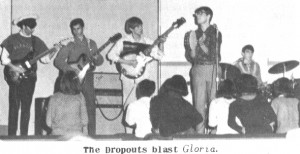
I’m talking about Ensemble because I think it was really fine musically. If this were nothing but a self-indulgent nostalgia trip, I’d be talking about that legendary garage band The Dropouts, and their groundbreaking performance of Van Morrison’s ‘Gloria’, which introduced electric music to my high school’s halls.
Anyway, in my memory, Ensemble was the finest amateur group I’ve ever sung in, and there have been many. But one wonders about the veracity of one’s memories, especially concerning the romantic days of one’s youth, right? So thanks to the wonders of modern technology and the luxury time on the hands of lots of bored baby-boomers, I was able to listen to Ensemble singing the standard ‘The Second Time Around’.
I’ll be the first to admit, it sounds pretty unspecial. It sounds VERY unspecial. Is my memory that askew? Well, it just so happens that in recent years I’ve had some degree of contact with four members of the group– Marc, Mark, Aaron, and Kathie. And it turns out that four of the five of us have been seriously involved with singing over the course of our lives, three professionally. They all corroborate my memory. It was an excellent, stringent training ground for precise, high-level choral singing.
Our director was named Frank Lang. He was a bachelor, a mamma’s boy according to rumor. Probably in his mid-30s when he taught us. He was petulant but professional. A good-humored guy, but he worked intensively with us for so long that there were plenty of conflicts along the way. I’m not idealizing that. We didn’t idolize Mr L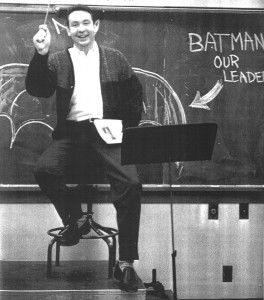 ang. My memory tells me that even then, as obnoxious high-schoolers, we respected his professional talents. I was a particularly obnoxious teenager, universally disliked by my teachers. A pain in the neck, a wiseass with a big mouth, a chronic disrupter of classroom decorum. Except for Ensemble. At the bell, I’d be sitting in my chair. Actually, at the edge of my chair. That’s what Drill Sergeant Lang forced into our hormone-choked brains. When you sing, your back is straight, your butt is at the edge of your chair, and your body is fully engaged to support your voice production. Even today, no matter how tired, no matter how bored, that’s how I sit in rehearsal.
ang. My memory tells me that even then, as obnoxious high-schoolers, we respected his professional talents. I was a particularly obnoxious teenager, universally disliked by my teachers. A pain in the neck, a wiseass with a big mouth, a chronic disrupter of classroom decorum. Except for Ensemble. At the bell, I’d be sitting in my chair. Actually, at the edge of my chair. That’s what Drill Sergeant Lang forced into our hormone-choked brains. When you sing, your back is straight, your butt is at the edge of your chair, and your body is fully engaged to support your voice production. Even today, no matter how tired, no matter how bored, that’s how I sit in rehearsal.
All five of us remember a lot of the repertoire. We could sing a lot of the songs today. We all would be happy to have the opportunity, which of course we won’t. But there’s one particular arrangement that Mr Lang brought us that I’ve had a dynamic relationship with for these 44 years since I last saw him. I remember the score, written in his hand. It was his arrangement of a difficult, beautiful, challenging jazz song, ‘Spring Can Really Hang You Up the Most’.
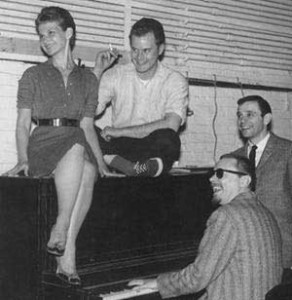 The lyrics of the song were written by Fran Landesman in 1952, who with her husband Jay and pianist buddy Tommy Wolf, wrote a beatnik musical (sic), “The Nervous Set”, poster by Jules Feiffer, which actually made it to Broadway. Here’s a fascinating clip describing Fran as an impresario and hostess of no small renown, a central figure in the bohemian scene of the late 50s/early 60s in St Louis (where she was central in promoting the nascent careers of Woody Allen and Barbra Streisand, among many others), later in London. According to friends, Fran was inspired to write ‘Spring Can Really Hang You Up the Most’ by TS Eliot’s poem, ‘The Wasteland’. (I wrote my master’s thesis on TS Eliot. In retrospect, I wish I’d written it on Fran Landesman.)
The lyrics of the song were written by Fran Landesman in 1952, who with her husband Jay and pianist buddy Tommy Wolf, wrote a beatnik musical (sic), “The Nervous Set”, poster by Jules Feiffer, which actually made it to Broadway. Here’s a fascinating clip describing Fran as an impresario and hostess of no small renown, a central figure in the bohemian scene of the late 50s/early 60s in St Louis (where she was central in promoting the nascent careers of Woody Allen and Barbra Streisand, among many others), later in London. According to friends, Fran was inspired to write ‘Spring Can Really Hang You Up the Most’ by TS Eliot’s poem, ‘The Wasteland’. (I wrote my master’s thesis on TS Eliot. In retrospect, I wish I’d written it on Fran Landesman.)
April is the cruelest month, breeding
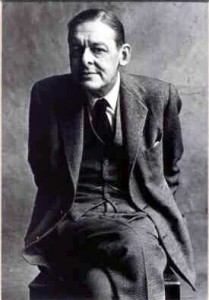 Lilacs out of the dead land, mixing
Lilacs out of the dead land, mixing
Memory and desire, stirring
Dull roots with spring rain.
I sure wish I could talk a bit about the beatnik scene of the 1950s, but another time. Perhaps I’ll take that opportunity when I talk about the companion piece from the same musical, another obscure standard, ‘Ballad of the Sad Young Men’, a very, very beautiful song itself.
Ms Landesman wrote more versions of lyrics for this song than Dylan did for his masterpieces of the mid-1970s. At the end of the post you can see the version I know best, the lyrics Mr Lang incorporated into his choral arrangement for Ensemble.
I don’t know what version of the song inspired Mr Lang. All the 1950s cool chick singers recorded it – June Christy, Chris Conner, Blossom Dearie, Julie London, Helen Merrill, Irene Kral – as well as many non-cool ones (Carmen McRae, Betty Carter, Ella Fitzgerald, Sarah Vaughan). Although the song has never really penetrated the wider audience’s consciousness, in recent years both diva vamps (Jane Monheit, Holly Cole, and a personal favorite, Kat Edmonson) and rock/pop singers (Rickie Lee Jones, Bette Midler) have had their go at it, a credit to the song’s staying power (as one critic said, the song “grows every year”). Barbra Streisand sang it live at the very beginning of her career (1962) and again towards the end (2009). One of my very favorites versions is that by Norwegian Radka Toneff (who is always wonderful, with her glacial purity), to whom I paid tribute at some length in SoTW 033. The song has also been given innumerable instrumental treatments over the years.
 As I’ve mentioned, ‘SCRHYUTM’ (sounds suspiciously like…) is an inordinately challenging song technically. Despite the catchy hook of the title (with the roller-coaster stomach-in-your-throat plunge on ‘hang you up’, the melody is slithery, slippery, abstract, bordering on unsingable. From experience, let me tell you that this isn’t one that you want to try to perform unaccompanied. I’ve been listening to the many attempts, and have heard some very fine singers struggle with the song. So why do so many keep trying their hand at it? Because it’s so enticing and elusive and seductive, because it’s so precise and affective in its evocation of the spring blues. April can indeed be the cruelest month.
As I’ve mentioned, ‘SCRHYUTM’ (sounds suspiciously like…) is an inordinately challenging song technically. Despite the catchy hook of the title (with the roller-coaster stomach-in-your-throat plunge on ‘hang you up’, the melody is slithery, slippery, abstract, bordering on unsingable. From experience, let me tell you that this isn’t one that you want to try to perform unaccompanied. I’ve been listening to the many attempts, and have heard some very fine singers struggle with the song. So why do so many keep trying their hand at it? Because it’s so enticing and elusive and seductive, because it’s so precise and affective in its evocation of the spring blues. April can indeed be the cruelest month.
Interestingly, very few men have sung the song, although there’s nothing gender-specific about it.
So which version are we going to go for with our Song of The Week? I wish it could have been Ensemble’s but that one’s gone. It could easily have been Radke’s, or either of Barbra’s. But we’ll go with the best-known version of a too-little-known song, that of Ella Fitzgerald’s from the album “Clap Hands, Here Comes Charlie!” (1961). We’ve been carrying on far to long to give fair space to the impeccable, inimitable Ms Fitzgerald. Let’s just say that she more than anyone has the technical skill to deliver the song effortlessly, focusing purely and sweetly-sadly on the oh-so-melancholy music itself.
I don’t know what musical path led Mr Lang to ‘Spring Can Really Hang You Up the Most’. I don’t know what his tastes were. But my guess is that this is what he really loved, and that we performed ‘The Second Time Around’ and ‘Jingle Bells’ a lot more for obvious reasons. I remember his arrangement of ‘SCRHYUTM’, albeit sketchily, because it was (and still is) a very difficult song. I would give an awful lot to hear his version today.
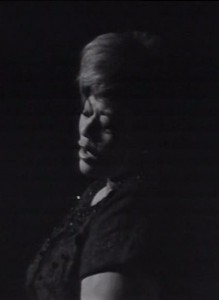 Choral jazz is a sub-sub-sub-genre I worked in passionately for years, , especially as it’s being taken to new levels in Scandinavia todayinspired by Mr Lang, a very short midget on the shoulders of a giant. I sure wish I could show him the work I was fortunate enough to do in the field. And I believe very firmly that Mr Lang’s arrangement was half a century ahead of its time. Probably more, because the field still hasn’t gotten there. I thought it was intriguing when I encountered it at 17. Today, in retro-retrospect, it looks all that much more brilliant.
Choral jazz is a sub-sub-sub-genre I worked in passionately for years, , especially as it’s being taken to new levels in Scandinavia todayinspired by Mr Lang, a very short midget on the shoulders of a giant. I sure wish I could show him the work I was fortunate enough to do in the field. And I believe very firmly that Mr Lang’s arrangement was half a century ahead of its time. Probably more, because the field still hasn’t gotten there. I thought it was intriguing when I encountered it at 17. Today, in retro-retrospect, it looks all that much more brilliant.
And I sure wish I could tell him how much it’s been a part of my musical soul after all these years. I’m guessing it would give him some satisfaction, to know that he planted some musical seeds inside those pimpled skulls, seeds that actually took root. I was 20 years younger than the Frank Lang in the picture, and I’m a whole lot older than that man now. A few years ago one of my old high-school friends sent me Mr Lang’s obituary from the Grover’s Corner News. I’m not going to have the chance to thank him face-to-face. So I’ll do it here, second best but still somewhat gratifying. Thanks, Mr Lang.
If you liked this post, you might also like:
SoTW 033: Radke Toneff, ‘The Moon is a Harsh Mistress’



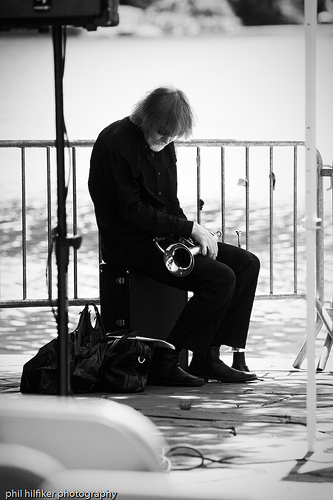

I grew up listening to Ella’s “Spring can really hang you up the most’, and I thought it was sublime. Revisiting it and the record as a whole years later, it now sounds to me like a hack job, probably dashed together to fulfill a contract obligation. If you want to hear the song done really well, listen to the Dick and Kiz Harp version. Talk about obscure! But the recording is still available on the 90th Floor label. With most songs that Kiz Harp sang, once you hear her sing it, you can’t hear anyone else singing it without thinking, ‘nice, but it’s not Kiz Harp’. That’s certainly true of this one. And listen to her ‘On Green Dolphin Street’ on the same record. No one else comes close.
Kiz Harp made a song her own. Listen to her on ‘Mad about the Boy’, ‘Angel Eyes’, and ‘Fly me to the Moon’, also on 90th Floor records. Now she was sublime! She doesn’t quite claim ‘God Bless the Child’ as her own. But who could? And she doesn’t best Sarah Vaughn’s ‘Black Coffee’ either. But she certainly was courageous to try. We lost Kiz to a cerebral hemorrhage at the age of 29, before her records were released, and from her voice, you can hear why; she smoked like a chimney.
I must admit from the start my knowledge of this genre of music is very limited. However I enjoyed the post and the music. And although I like Miss Fitzgerald a lot I have this bigger hankering for Sarah Vaughan. The depth and range of her voice mesmerizes me. She makes any song her own. I especially love her album Swingin Easy, and the scat of “Shulie a Bop” is out of this world. WoNdErFuL stuff. Just a 2 cents….. Thanks!!!
Great post. A tad sentimental, but what self-respecting, middle-aged human wouldn’t excuse you for that? Plus, it really is a lovely, evocative song.
עד 120
Love that song. It’s always been a favorite. Glad to see you talking about it.
Fine tribute.
Here is Fran Landesman’s obituary in the St. Louis Post-Dispatch in 2011. Her husband Jay had passed away just a little while before. The Landesmans, their Crystal Palace, and Gaslight Square are mourned and remembered in St. Louis very fondly.
~~~~~~
Fran Landesman was the rebellious daughter of a dressmaker who grew up to write songs and become a co-founder of the famed Crystal Palace nightclub in St. Louis’ Gaslight Square.
During the 1950s and ’60s, the club was home to such acts as the Smothers Brothers, Mike Nichols and Elaine May, Lenny Bruce, Woody Allen, Dick Gregory and Barbra Streisand.
Ms. Landesman died Saturday (July 23, 2011) at her home in London. She had been performing until her death at 83.
She was a lyricist, not a singer, and ‘she kind of croaked at the songs,” recalled Rocco Landesman, her late husband’s nephew. He’s a Broadway producer who grew up in St. Louis and is chairman of the National Endowment for the Arts.
Fran Deitsch grew up in New York, married St. Louis native Jay Landesman and moved with him back to St. Louis to open a bar. They opened the Crystal Palace at 3516 Olive Street. In 1958, they moved to 4240 Olive Street and their club became a center of activity at Gaslight Square, which attracted bohemians and socialites as well as the city’s rank and file.
The Landesmans owned several buildings in the Square, and the stars and stars-to-be who played the Palace stayed upstairs in ornately furnished quarters.
“The Palace was the bomb that ignited Gaslight Square, and the Landesmans brought in all sorts of talent who otherwise would never have set foot in St. Louis,” recalled Wayne Brasler, who grew up in Normandy and teaches journalism at the University of Chicago.
The talent included avante-garde comedy such as the Compass Players from Chicago and Jerry Stiller and Anne Meara. Streisand started as the opening act for the Smothers Brothers.
The Palace’s crowning achievement was “The Nervous Set,” a musical with songs by Ms. Landesman and her collaborator, Tommy Wolf. Some of the songs became covers by Ella Fitzgerald, June Christy and Jackie and Roy.
“Fran was gorgeous, sensitive, incredibly talented, quixotic, serious, funny and never came close to the international recognition she deserved,” Brasler said.
In 1964, the Landesmans left for London. Three years later, Ms. Landesman returned to perform at the old Gaslight Theater on Boyle and Lindell. She also wrote “Molly Darling,” a musical for The Muny.
Jay Landesman died Feb. 20 at age 91. Survivors include the couple’s sons, Cosmo and Miles. A memorial will be held in London.
My Mr. Lang was Mr. Walker. In his youth he played trumpet for Artie Shaw. Found himself teaching high school choral music to a bunch of unappreciative hoodlums. He always said, ” everyone can sing.” He encouraged all forms of musical self expression. As we wandered into the music room we were treated often to his ongoing struggles to complete his “jazz mass.’ Jazz? It was still very much a mystery to me. I was in all.of his choral classes with the exception of Boys Glee. None of the discipline of a Mr. Lang, he was often disheveled and scattered. When I was in my senior year he concocted an original Summer of Love musical we called “Psyhchorial.” It had three performances during a week of epic rain in SoCal. There were more people on stage than in the audience. We were devoted to him. Thank you, Mr. Walker.
I was the drummer in “The Dropouts” Members from different bands got together to bring rock to Showcase. We drove the staff director of the show nuts. I am singing in this photo because the lead singer’s mic was dead. They tried everything, but Showcase always had a pop group of some sort after that!